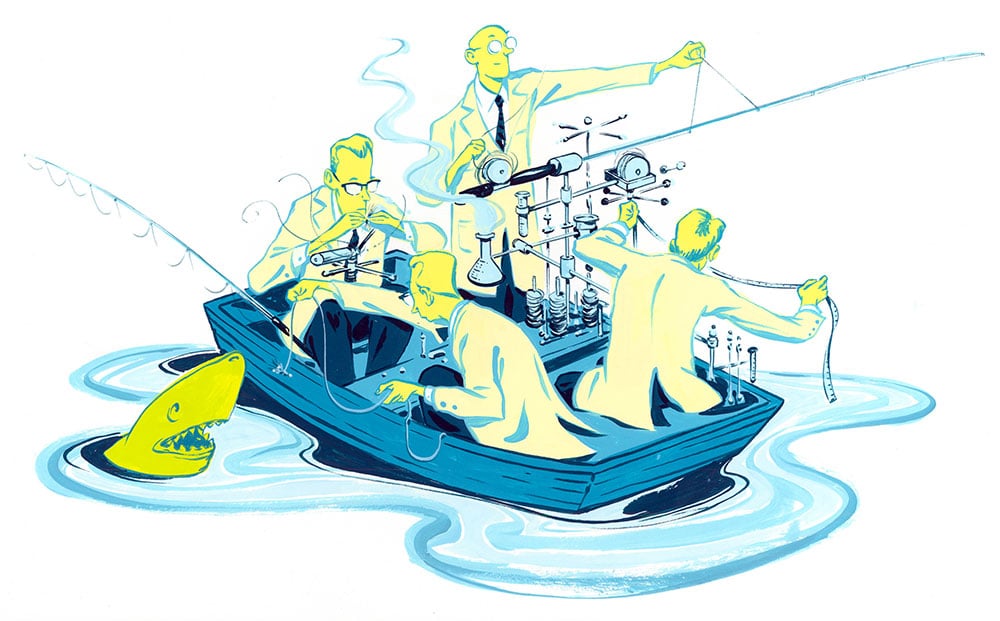
How Florida Shaped Fly- and Light Tackle Fishing
Fly and light-tackle anglers today owe a huge debt to south Florida of the ’60s through the mid-’70s. It was there that many modern-day light-tackle and fly fundamentals were conceived and developed.
Four groups changed this world forever. Perhaps most influential were the light-tackle clubs in the Miami area.
The clubs were designed for competition in four light-tackle categories: spinning, plug, fly and light general. Each contest usually ran about six months, and members competed passionately among themselves as well as against other clubs. These competitions inspired creativity. The drag used in all modern plug-casting reels came from these tournaments. At the time, Garcia’s Fishing Tackle’s Ambassadeur reel was the best we could buy, but the drag was a tiny washer that burned up after one big fish. A machinist club member on his company’s time routed out the interior of this reel’s main shaft gear. He and another club member discarded the useless ring and filled the opening with several greased Penn spinning reel washers, creating a drag that worked. Tackle company owner Lou Childre took one of these modified reels to Japan, and thus was born the modern plug-casting drag.
Another influential group was the Florida Keys guides. While they numbered just a few dozen in the early ’50s, these guides pioneered light tackle and fly-fishing for bonefish and tarpon. They helped to develop the flats skiff, fish-fighting techniques and many other
innovations built on by anglers today.
The third innovating organization was the Metropolitan South Florida Fishing Tournament (the Met Tournament). This event became the largest fishing tournament in the world, and the board of directors was comprised of leading businessmen and anglers from south Florida.
In the 1960s, there was a fishing culture in south Florida that dominated the social structure. Almost everyone fished. The four-month-long Met Tournament was the social highlight of the year and was highly publicized. There were many divisions, and it was one of the first tournaments to give awards for releasing fish. It received a quarter-million entries in 16 weeks.
Competition in the Met was stiff and anglers stopped at nothing to win. I believe Norman Jansic was one of the finest light-tackle fishermen — ever. He competed in a 16-foot aluminum boat and won against anglers with expensive offshore craft. An example of the length to which these fishermen would go to win Met awards demonstrates how Norm won the largest shark on fly category.
With a glass-bottom bucket he constructed, Norm could see underwater. He then enlisted the aid of friend Bill Cunningham, who poled the entire Sandy Key Basin. Norm lay on his belly looking through the bucket and marked every structure on a chart. Later, Norman hooked a large blacktip shark. During the battle, Norm and Bill kept looking at the chart. Each time the shark headed toward a crab trap or other line-cutting structure, Bill would race the motor between it and the shark to frighten it away. In little more than a half-hour, Norm landed the shark, winning the Met trophy.
The other organization that contributed so much to the development of tackle and technique for light-tackle and fly-fishing was the Miami Beach Rod & Reel Club. It was the Met and the Rod & Reel Club laws that formed the basis for early rules for fly-rod world records.
Like the blue-collar local clubs, the Rod & Reel had various divisions of angling accomplishments eagerly sought by members. The Homer Rhode Loop knot came from a member. Dr. Web Robinson belonged to the Rod & Reel Club. He lived in the Keys with his wife, Helen, and they hired the best offshore captain in the south, Capt. Lefty Regan. The three developed the method of teasing a billfish and removing the teaser and offering a fly. Because of their experimenting, scores of teasing techniques have evolved.
The club was formed in 1929 and was the second oldest such fishing club in the United States. Sadly, the club closed not long ago.
Today the rods we fish with, modern reels with superb drags, and the knowledge of how to fight large fish on fly gear and many other techniques almost all are based on what these four groups developed in south Florida in the 1960s through mid-1970s.









